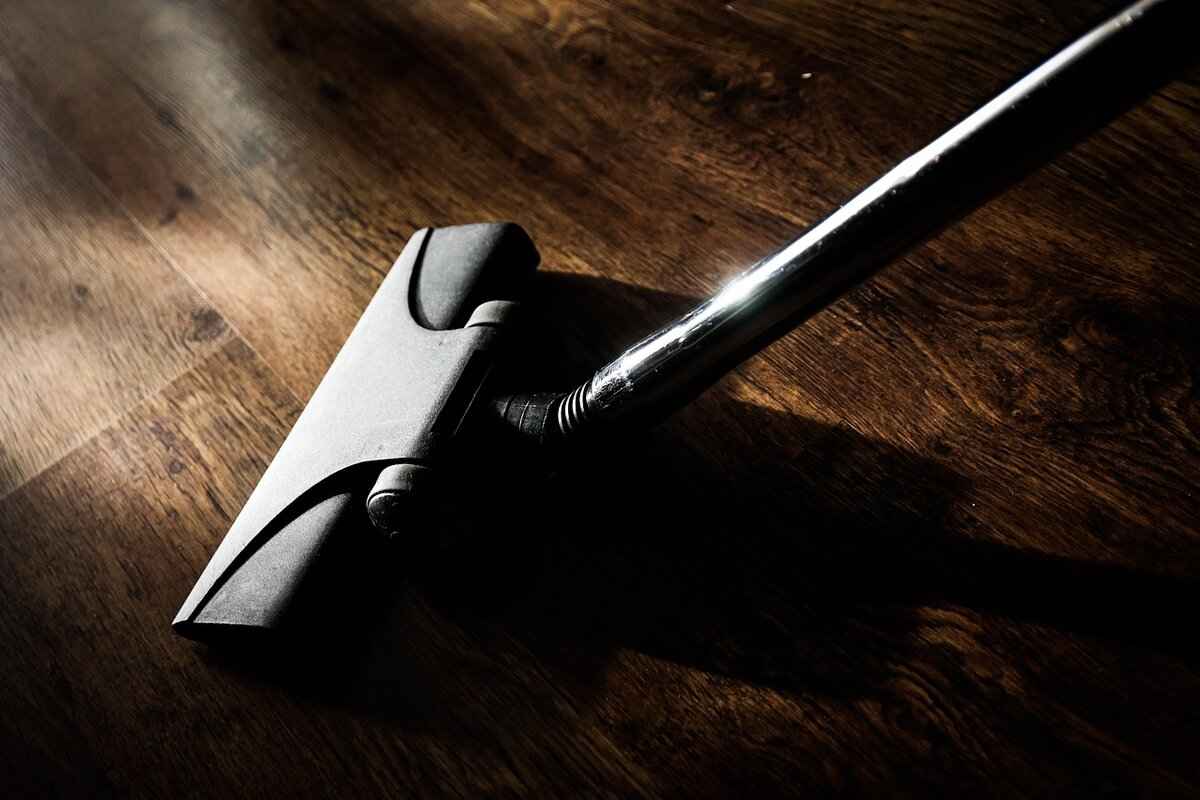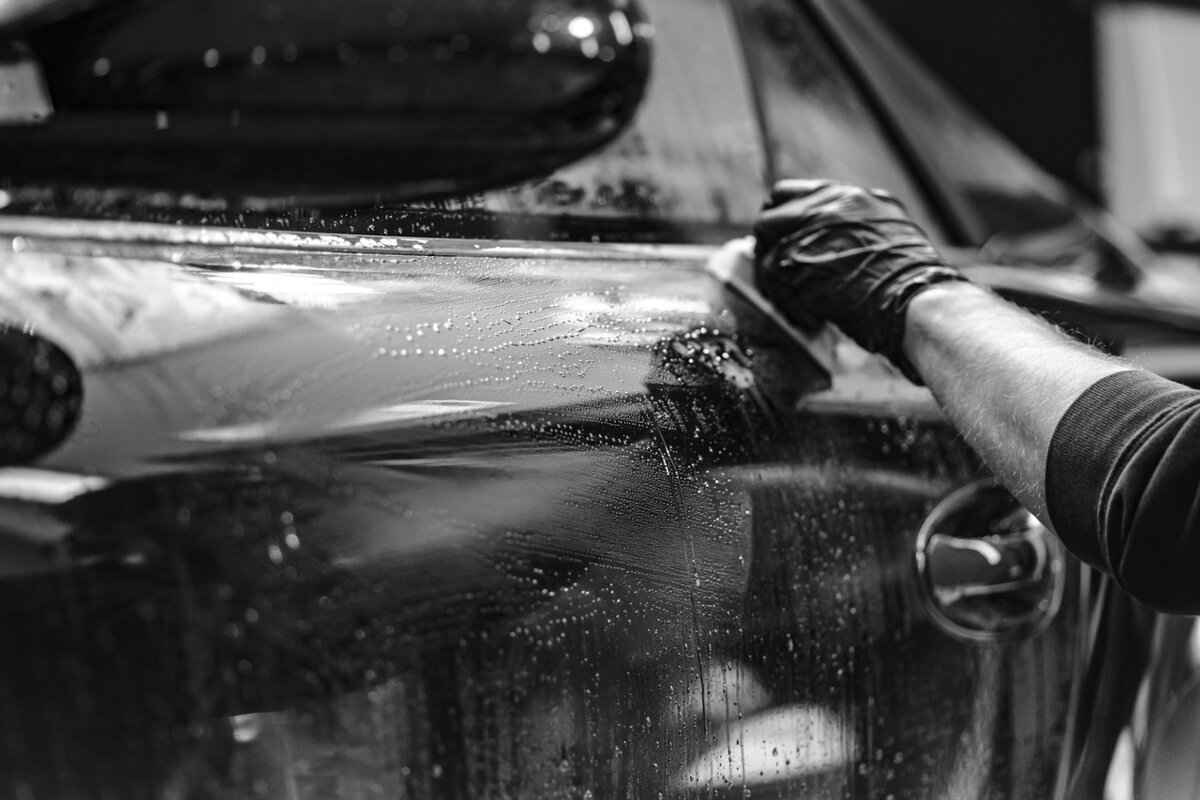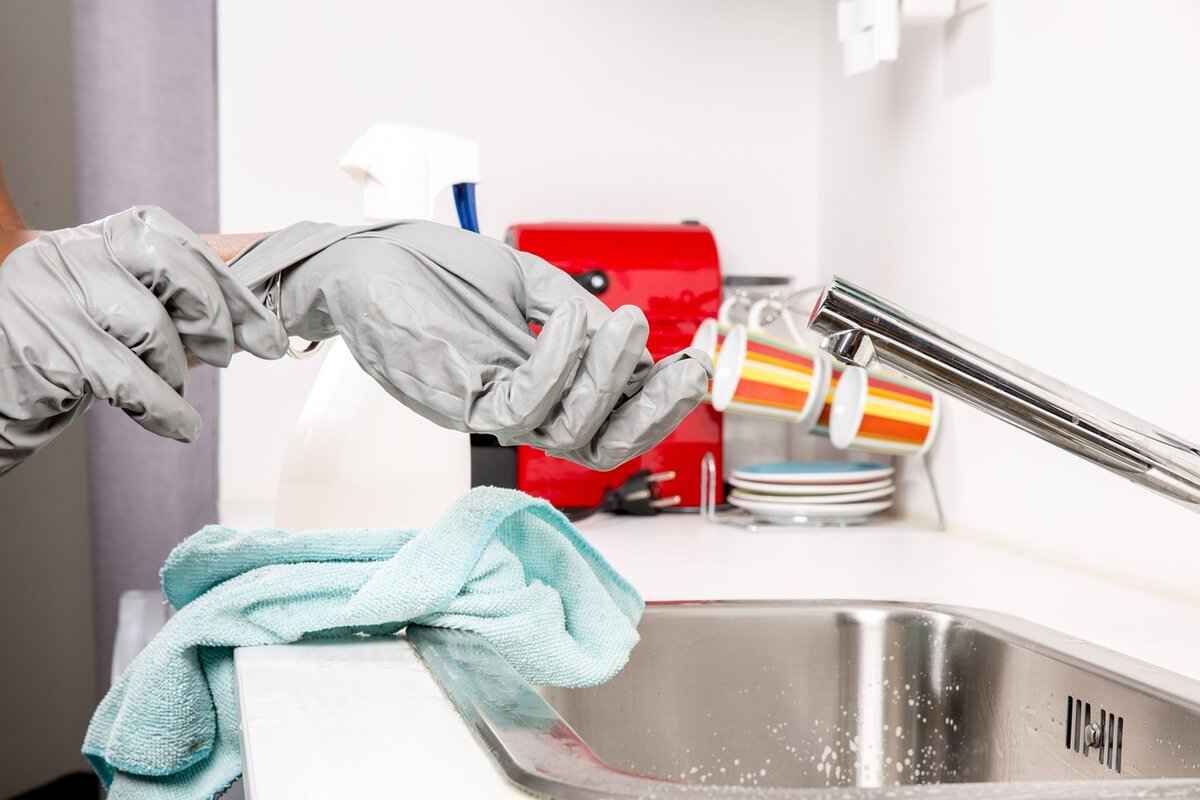This article provides comprehensive strategies for removing smoke odors from cars, including effective cleaning techniques and practical insights to restore a fresh environment in your vehicle. Cigarette smoke can cling to various surfaces within your car, resulting in a persistent and unpleasant odor. Understanding how to effectively eliminate these smells can significantly enhance your driving experience.
Understanding the Causes of Smoke Odor in Cars
To effectively remove smoke smell, it’s crucial to understand its origins. Cigarette smoke contains numerous chemicals that can penetrate upholstery, carpets, and even the air conditioning system. These particles can settle into the fabric and surfaces over time, making it a challenge to eliminate completely. The longer the smoke lingers, the more ingrained the odor becomes.
Essential Cleaning Supplies for Smoke Odor Removal
Gathering the right cleaning supplies is essential for effective smoke odor removal. Here’s a list of necessary tools and products to tackle the problem efficiently:
- Vacuum cleaner with attachments
- Microfiber cloths
- Odor-neutralizing sprays
- Upholstery cleaner
- Carpet shampoo
- Air fresheners or deodorizers
Cleaning Agents for Odor Elimination
Certain cleaning agents are particularly effective in neutralizing smoke smells. Look for products that contain enzymes or activated charcoal, as these ingredients can break down odor-causing compounds. Additionally, white vinegar and baking soda are natural options that can absorb and neutralize odors effectively.
Natural vs. Chemical Cleaners
Choosing between natural and chemical cleaners can impact your health and the environment. Natural cleaners, like vinegar and baking soda, are safer for your health and are biodegradable. However, chemical cleaners may provide faster results but can contain harsh substances. Weighing the pros and cons will help you make an informed decision based on your preferences and needs.
Odor Absorbers and Deodorizers
Using odor absorbers and deodorizers can enhance your cleaning efforts. Products containing activated charcoal or zeolite can trap and neutralize odors effectively. Consider placing these absorbers in your car for ongoing odor control after your initial cleaning.
Tools for Deep Cleaning Your Car
The right tools can make a significant difference in your cleaning results. Essential tools include:
- Steam cleaner for deep upholstery cleaning
- Detailing brushes for hard-to-reach areas
- Wet/dry vacuum for carpets and mats
Step-by-Step Guide to Cleaning the Interior
A systematic approach is key to effectively removing smoke odors. Follow these steps for a thorough clean:
- Vacuuming and Dusting: Start by vacuuming all surfaces, including under the seats and in crevices. Use a detailing brush to remove dust from vents and other hard-to-reach areas.
- Wiping Down Surfaces: After vacuuming, use a damp microfiber cloth to wipe down all hard surfaces, including the dashboard, door panels, and center console.
Addressing Upholstery and Carpets
Upholstery and carpets are often the primary culprits for lingering smoke smells. Here are effective cleaning methods for these areas:
Shampooing Upholstery
Shampooing upholstery can significantly reduce odors. Use a specialized upholstery cleaner and a brush to work the product into the fabric, then blot with a clean cloth.
Cleaning Carpets and Mats
Carpets and floor mats also require special attention. Use a carpet cleaner or a mixture of vinegar and water to scrub the mats, then rinse thoroughly and allow to dry.
Utilizing Air Fresheners and Odor Neutralizers
After cleaning, using air fresheners and odor neutralizers can help maintain a fresh scent. Choose products that neutralize odors rather than just masking them.
Choosing the Right Air Freshener
Selecting the appropriate air freshener is vital for long-lasting results. Opt for products that are specifically designed for automotive use, as they tend to be more effective in combating smoke smells.
DIY Odor Neutralizers
Creating homemade odor neutralizers can be both cost-effective and efficient. A simple mixture of vinegar and water in a spray bottle can work wonders. Spray lightly on surfaces and allow it to air dry.
Preventing Future Smoke Odors in Your Car
Preventing smoke odors from returning is essential for maintaining a fresh vehicle. Here are practical tips to avoid future issues:
Establishing a No-Smoking Policy
Implementing a no-smoking policy in your car is a straightforward way to prevent odors. Communicate this rule clearly to passengers to ensure compliance.
Regular Maintenance Tips
Regular maintenance and cleaning can help keep your car smelling fresh. Aim to vacuum and clean surfaces at least once a month, and consider using odor absorbers regularly to maintain a pleasant environment.

Understanding the Causes of Smoke Odor in Cars
To effectively remove smoke smell, it’s crucial to understand its origins. Cigarette smoke is not just a simple odor; it consists of thousands of chemical compounds that can penetrate various materials within your vehicle. This makes it a challenge to eliminate completely. The smell can cling to upholstery, carpets, and even the air conditioning system, creating a persistent and unpleasant environment.
When someone smokes in a car, the smoke particles settle into the fabric and surfaces, creating a lingering odor that can be difficult to eradicate. This is because the smoke particles adhere to porous materials, such as fabric seats and carpets, as well as non-porous surfaces like plastic and vinyl. Over time, these particles can build up, resulting in a strong, musty smell that can be off-putting to passengers.
Additionally, the temperature and humidity inside a car can exacerbate the smell of smoke. In warm weather, the heat can cause the smoke particles to release their odor more intensely, making the smell more pronounced. On the other hand, in humid conditions, moisture can reactivate the odor particles, making them more noticeable. This cyclical pattern can lead to a car that feels perpetually smoky, even if smoking has ceased.
Moreover, the age of the vehicle plays a role in how smoke odors are absorbed. Older cars with worn-out interiors are more likely to retain smells, as the materials may have become more porous over time. This can make it particularly challenging to remove smoke odors from vintage vehicles or those that have been used extensively.
To combat these issues, it’s essential to adopt a comprehensive cleaning strategy. Understanding the sources of the smoke odor allows you to target your cleaning efforts more effectively. For instance, focusing on deep cleaning upholstery and carpets, as well as ensuring the air conditioning system is clean, can significantly reduce the presence of smoke smells.
In summary, cigarette smoke can infiltrate a vehicle’s interior in various ways, making it crucial to recognize the causes of smoke odor. By understanding how smoke interacts with different materials and how environmental factors can influence the smell, you can develop a more effective plan for removing these persistent odors.

Essential Cleaning Supplies for Smoke Odor Removal
When it comes to removing smoke odors from your vehicle, gathering the right cleaning supplies is essential for effective results. Tackling smoke smell can be a daunting task, but with the proper tools and products, you can efficiently restore a fresh environment in your car. This section outlines the necessary items you will need to combat the problem effectively.
- Vacuum Cleaner: A powerful vacuum cleaner equipped with a HEPA filter is crucial for removing smoke particles from upholstery and carpets. Look for models with attachments for reaching tight spaces.
- Odor Neutralizing Sprays: Products specifically designed to neutralize odors rather than just mask them are essential. Look for enzymatic cleaners that break down smoke particles.
- Microfiber Cloths: These are perfect for wiping down surfaces without leaving lint behind. They can be used with cleaning solutions to effectively remove residue.
- Steam Cleaner: A steam cleaner can penetrate deep into fabrics and surfaces, killing bacteria and removing odors. This tool is highly effective for upholstery and carpets.
- Baking Soda: This natural odor absorber is a must-have. Sprinkle it on carpets and upholstery, let it sit for a few hours, and then vacuum it up to help eliminate lingering smells.
- Air Purifiers: Portable air purifiers can help remove smoke particles from the air inside your car. Look for models that are designed for automotive use.
- Brushes: A variety of brushes, including soft-bristled and stiff-bristled options, are helpful for scrubbing surfaces and upholstery.
- Essential Oils: While not a cleaning supply per se, adding a few drops of essential oils to your cleaning routine can provide a pleasant scent and help mask odors.
When selecting cleaning products, consider both effectiveness and safety. Natural cleaners are often less harsh on the environment and your health, while chemical cleaners may provide quicker results. Always read labels and follow instructions for the best outcomes. It’s advisable to test any product on a small, inconspicuous area of your car’s interior first to ensure it does not cause damage.
In addition to the cleaning supplies mentioned, having the right tools can significantly enhance your cleaning efforts. For instance, using a detail brush can help reach tight spots in the dashboard and between seats. A lint roller is also useful for picking up pet hair or other debris that may contribute to odors. Furthermore, consider investing in a carpet extractor for deep cleaning carpets and upholstery, as it can remove embedded odors more effectively than standard cleaning methods.
By gathering these essential cleaning supplies and tools, you will be well-equipped to tackle smoke odors in your car. Remember that persistence is key; it may take several cleaning sessions to completely eliminate the smell. With the right approach and supplies, however, you can restore your vehicle to a fresh and pleasant environment.
Cleaning Agents for Odor Elimination
When it comes to removing persistent smoke odors from your vehicle, the choice of cleaning agents can make all the difference. Certain products are specifically designed to neutralize and eliminate these unpleasant smells effectively. In this section, we will delve into the best cleaning agents available on the market, highlighting their unique benefits and how they can help restore a fresh atmosphere in your car.
There are several categories of cleaning agents that can effectively tackle smoke odors:
- Enzymatic Cleaners: These cleaners contain enzymes that break down organic materials, making them highly effective against smoke odors. They work by digesting the odor-causing particles, which can be particularly beneficial for upholstery and carpets.
- Odor Neutralizers: Products that contain odor-neutralizing compounds are excellent for masking and eliminating smoke smells. Look for options with activated charcoal or baking soda, as these ingredients are known for their absorbing properties.
- Vinegar Solutions: A natural alternative, vinegar can neutralize odors due to its acidic nature. Mixing equal parts of vinegar and water in a spray bottle creates an effective cleaner that can be used on various surfaces.
- Commercial Smoke Odor Eliminators: Many brands offer specialized smoke odor eliminators that are formulated specifically for this purpose. These products often combine multiple cleaning agents to tackle smoke smells more effectively.
Utilizing the right cleaning agents not only helps in removing smoke odors but also offers several additional benefits:
- Deep Cleaning: Many specialized cleaners penetrate deep into fabrics and materials, ensuring that odors are eliminated at their source.
- Time Efficiency: Using targeted cleaning agents can significantly reduce the time spent on cleaning. They often require less scrubbing and can yield faster results.
- Protection of Surfaces: Quality cleaning agents will not only remove odors but also protect the surfaces from damage, ensuring longevity and maintaining the aesthetic appeal of your car’s interior.
If you prefer a more natural approach, there are several DIY cleaning solutions that can effectively combat smoke odors:
- Baking Soda Paste: Create a paste using baking soda and water, apply it to affected areas, let it sit for a few hours, and then vacuum it up. This method is particularly effective for upholstery.
- Citrus Solutions: Citrus peels can be placed in your car to naturally freshen the air. Additionally, a spray made from citrus juice and water can be used as a cleaner.
In summary, choosing the right cleaning agents is crucial for effectively eliminating smoke odors in your car. Whether you opt for commercial products or DIY solutions, understanding the benefits and applications of various cleaning agents will help you achieve the best results. With the right tools and techniques, you can restore a fresh and inviting atmosphere to your vehicle.
Natural vs. Chemical Cleaners
When it comes to maintaining a clean and fresh environment in your car, the choice between natural and chemical cleaners can significantly influence both your health and the surrounding ecosystem. This section delves into the advantages and disadvantages of each cleaning type, helping you make an informed decision.
Natural cleaners are typically made from plant-based ingredients and are free from harmful chemicals. They are considered safer for both human health and the environment. Here are some key benefits:
- Health Benefits: Natural cleaners are less likely to cause respiratory issues, skin irritations, or allergic reactions.
- Environmental Impact: Many natural products are biodegradable and do not contribute to air or water pollution.
- Cost-Effective: Ingredients like vinegar, baking soda, and lemon juice can often be found in your kitchen, making them budget-friendly options.
However, there are some drawbacks to consider:
- Effectiveness: Natural cleaners may require more time and effort to achieve the same level of cleanliness as chemical alternatives.
- Shorter Shelf Life: Without preservatives, natural products can spoil more quickly, limiting their usability.
Chemical cleaners are formulated with synthetic ingredients designed for powerful cleaning and odor elimination. Here are some advantages they offer:
- Immediate Results: Chemical cleaners often provide quick and visible results, making them appealing for those seeking instant cleanliness.
- Specialized Formulations: Many chemical products are specifically designed to tackle tough odors, including smoke, grease, and mildew.
Nevertheless, there are significant concerns associated with chemical cleaners:
- Health Risks: Prolonged exposure to harsh chemicals can lead to various health issues, including headaches, dizziness, and long-term respiratory problems.
- Environmental Concerns: Many chemical cleaners contain substances that can be harmful to aquatic life and contribute to environmental degradation.
Choosing between natural and chemical cleaners ultimately depends on your priorities. If you value health and environmental safety, natural cleaners may be the best option. However, if you need immediate and powerful cleaning solutions, chemical cleaners might be more suitable. It’s essential to weigh the pros and cons of each type to align your cleaning practices with your values and needs.
In conclusion, the decision between natural and chemical cleaners is not just about effectiveness; it’s also about your health, the environment, and personal preferences. By understanding the implications of your choice, you can maintain a cleaner car while also being mindful of your well-being and the planet.
Odor Absorbers and Deodorizers
When it comes to eliminating smoke odors from your car, odor absorbers and deodorizers play a crucial role in your cleaning arsenal. These products not only mask unpleasant smells but also neutralize them at the source, making them essential for achieving a fresh and inviting atmosphere inside your vehicle.
Understanding the different types of odor absorbers and deodorizers available can help you choose the right products for your needs. Here, we will highlight some effective options that have garnered positive reviews from users and experts alike.
| Product Type | Key Features | Recommended Usage |
|---|---|---|
| Baking Soda | Natural, odor-neutralizing properties | Sprinkle on carpets and upholstery, leave for a few hours, then vacuum. |
| Activated Charcoal Bags | Highly effective at absorbing odors and moisture | Place in various locations inside the car for continuous odor control. |
| Odor Neutralizing Sprays | Instant deodorization, often with pleasant scents | Spray directly onto affected areas or into the air for immediate freshness. |
| Essential Oil Diffusers | Natural scents, customizable fragrance options | Add a few drops of essential oil to the diffuser and let it circulate. |
Among these products, baking soda stands out as a cost-effective and natural solution. It works by absorbing moisture and odors, making it ideal for use on upholstery and carpets. To use, simply sprinkle a generous amount on the affected areas, let it sit for a few hours, and then vacuum it up. This simple yet effective method can significantly reduce smoke smells in your car.
Activated charcoal bags are another excellent option, especially for those looking for a long-term solution. These bags are filled with activated charcoal, known for its ability to absorb odors and excess moisture. Place them in your car, and they will work continuously to keep the air fresh.
For immediate results, odor neutralizing sprays can be very effective. These sprays are designed to eliminate odors on contact, providing a quick fix for unpleasant smells. However, it’s essential to choose a spray that specifically targets smoke odors to ensure optimal results.
Lastly, consider using essential oil diffusers for a more pleasant aroma. By adding a few drops of your favorite essential oil, you can create a calming and fresh atmosphere within your vehicle. This not only masks the smoke smell but also helps in creating a more enjoyable driving experience.
In conclusion, utilizing the right odor absorbers and deodorizers can significantly enhance your cleaning efforts. By incorporating these products into your car maintenance routine, you can effectively combat smoke smells and maintain a fresh environment in your vehicle.
Tools for Deep Cleaning Your Car
When it comes to achieving a thorough clean of your vehicle, having the right tools is essential. The effectiveness of your cleaning efforts can greatly improve with proper equipment. Below, we will explore the essential tools needed for a comprehensive deep clean of your car, ensuring that you tackle every corner and crevice.
- Vacuum Cleaner: A high-quality vacuum cleaner is a must-have for removing dirt, debris, and dust from your car’s interior. Look for models with attachments that can reach tight spaces, such as the crevice tool and upholstery brush.
- Microfiber Cloths: These cloths are perfect for wiping down surfaces, as they trap dust and grime without scratching your vehicle’s interior. Use them for cleaning dashboards, windows, and other surfaces.
- Soft-Bristled Brush: A soft-bristled brush is ideal for cleaning delicate areas, such as air vents and upholstery. It can help dislodge dirt without damaging surfaces.
- Steam Cleaner: For a deep clean, consider using a steam cleaner. This tool uses hot steam to sanitize surfaces and eliminate odors, making it particularly effective for removing smoke smells.
- Detailing Brushes: These smaller brushes are great for intricate areas, such as cup holders and seams. They help to ensure you don’t miss any spots during your cleaning process.
- Spray Bottles: Having a few spray bottles on hand allows you to mix and apply your chosen cleaning solutions easily. Consider labeling them for quick identification.
- Carpet Cleaner: If your vehicle has carpets, a dedicated carpet cleaner can help lift stains and odors. Look for products specifically designed for automotive use.
- Odor Neutralizing Products: After cleaning, using odor neutralizers can help eliminate any lingering smells. Look for products specifically designed for automotive interiors.
In addition to these tools, having a good quality vacuum with strong suction power will enhance your cleaning efficiency. Regularly maintaining your cleaning tools is also crucial; ensure that your vacuum filters are clean and that your microfiber cloths are washed regularly to avoid spreading dirt.
By equipping yourself with the right tools, you can ensure a thorough deep clean of your car, effectively removing smoke odors and restoring a fresh environment. Investing in quality cleaning supplies not only improves your cleaning results but also contributes to the longevity of your vehicle’s interior.

Step-by-Step Guide to Cleaning the Interior
A systematic approach is key to effectively removing smoke odors from your car. This section provides a detailed step-by-step guide to cleaning your car’s interior, ensuring that you can restore a fresh environment. Smoke odors can be persistent, but with the right techniques, you can significantly reduce or even eliminate them.
Begin your cleaning process by gathering all the necessary supplies. You will need:
- Vacuum cleaner: A vacuum with attachments to reach tight spaces.
- Microfiber cloths: For dusting and wiping surfaces.
- Odor neutralizing cleaner: Look for products specifically designed to combat smoke smells.
- Brush: A soft-bristled brush for upholstery.
- Carpet cleaner: If your carpets need deep cleaning.
- Air fresheners: To maintain a pleasant scent after cleaning.
Once you have your supplies ready, follow these steps:
1. **Remove all items from the car:** Take out personal belongings, trash, and any removable floor mats.2. **Vacuum thoroughly:** Start from the top and work your way down. Vacuum the seats, under the seats, and all crevices. Use attachments to reach tight spots.3. **Dust surfaces:** Use a microfiber cloth to dust the dashboard, console, and door panels. Make sure to get into all the nooks and crannies.4. **Wipe down surfaces:** Apply an odor-neutralizing cleaner to a cloth and wipe down all hard surfaces. Avoid soaking the materials, especially if they are porous.5. **Clean upholstery:** For fabric seats, use a suitable upholstery cleaner. Test a small area first to ensure it does not discolor the fabric. Use a brush to work the cleaner into the fabric and then blot with a clean cloth.6. **Shampoo carpets and mats:** If your carpets are heavily soiled or retain odors, shampoo them using a carpet cleaner. Follow the manufacturer’s instructions for the best results.7. **Dry the interior:** Leave the windows open or use fans to help dry the interior completely. This step is crucial to prevent mold and mildew.8. **Apply air fresheners:** Once everything is dry, use air fresheners or odor absorbers to maintain a fresh scent in the vehicle.
By following this step-by-step guide, you can effectively tackle smoke odors and restore a clean, inviting atmosphere in your car. Regular maintenance is essential to keep your vehicle smelling fresh, so consider implementing a cleaning schedule to prevent odors from returning.
Vacuuming and Dusting
When tackling the challenging task of removing smoke odors from your car, vacuuming and dusting are the essential first steps. These techniques help eliminate loose particles and debris that can harbor unpleasant smells. Here’s how to ensure a thorough clean:
- Choose the Right Vacuum: Use a vacuum cleaner equipped with a hose and various attachments. A handheld vacuum is also effective for reaching tight spaces.
- Vacuum the Entire Interior: Start from the top and work your way down. Begin with the seats, ensuring you get into the crevices and seams where dust and debris accumulate. Don’t forget to vacuum the floor mats and carpets thoroughly.
- Use a Brush Attachment: For upholstered surfaces, a brush attachment can help lift dirt and dust more effectively. This is especially useful for removing particles embedded in fabric.
- Pay Attention to Hidden Areas: Remember to vacuum under the seats, between the seat cushions, and in the glove compartment. These areas can trap odors and dust.
After vacuuming, dusting is equally important. Dust can settle on various surfaces, contributing to the lingering smell of smoke. Here are some effective dusting techniques:
- Use Microfiber Cloths: Microfiber cloths are excellent for trapping dust without leaving behind lint. Dampen the cloth slightly for better results, especially on hard surfaces.
- Focus on High-Touch Areas: Dust surfaces like the dashboard, steering wheel, and door handles, as these areas accumulate dust and grime over time.
- Don’t Forget the Air Vents: Dust can also collect in air vents, which can circulate odors throughout the vehicle. Use a small brush or a can of compressed air to clean these areas effectively.
By incorporating these vacuuming and dusting techniques into your cleaning routine, you can significantly reduce the presence of smoke particles in your car. This foundational step sets the stage for more intensive cleaning methods that will follow, ensuring a comprehensive approach to eliminating smoke odors.
Wiping Down Surfaces
After vacuuming, the next critical step in removing smoke odors from your car is . This process not only helps to eliminate residual particles but also ensures that the interior of your vehicle is clean and fresh. Here, we will explore the best practices for cleaning various materials found in cars, ensuring a comprehensive approach to odor removal.
- Identify the Surfaces: Start by identifying the different surfaces in your car that require cleaning. These typically include the dashboard, door panels, center console, and any other plastic or vinyl surfaces.
- Select Appropriate Cleaning Solutions: Depending on the material, choose a suitable cleaning solution. For plastic and vinyl surfaces, a mild all-purpose cleaner or a specific automotive cleaner works best. For leather, opt for a leather conditioner or cleaner.
- Use Microfiber Cloths: When wiping down surfaces, always use microfiber cloths. They are designed to trap dirt and grime without scratching surfaces, making them ideal for delicate interiors.
- Work from Top to Bottom: Begin cleaning from the top surfaces, such as the dashboard, and work your way down. This prevents dirt and debris from falling onto areas you have already cleaned.
- Pay Attention to Crevices: Smoke particles can accumulate in small crevices and seams. Use a soft brush or a cotton swab dipped in your cleaning solution to reach these hard-to-access areas.
- Rinse and Dry: After wiping down surfaces, it’s important to rinse the cloth in clean water and go over the surfaces again to remove any cleaning solution residue. Finally, dry the surfaces with a clean, dry microfiber cloth.
Special Considerations for Sensitive Materials
When cleaning surfaces, it’s crucial to be cautious with sensitive materials. For instance, if your car has leather seats, avoid using harsh chemicals that can damage the leather. Instead, opt for products specifically designed for leather care. Additionally, be wary of using too much moisture, as it can seep into seams and cause mold or mildew.
Regular Maintenance
Incorporating regular surface wiping into your cleaning routine can significantly reduce the buildup of smoke odors over time. Aim to wipe down your car’s surfaces at least once a month, or more frequently if you notice lingering smells. This proactive approach not only keeps your car smelling fresh but also extends the life of your interior materials.
Conclusion
Wiping down surfaces is an essential step in the process of eliminating smoke odors from your car. By following these best practices, you can ensure that your vehicle remains clean and inviting, free from the unpleasant remnants of smoke. Remember, consistency is key; regular maintenance will help you maintain a fresh and pleasant environment in your car.

Addressing Upholstery and Carpets
When it comes to eliminating smoke odors from your vehicle, upholstery and carpets often play a significant role in retaining these unpleasant smells. Understanding how to effectively clean these areas is crucial for restoring a fresh environment in your car. This section will delve into various cleaning methods that can help tackle the stubborn smoke smells embedded in these materials.
Upholstery in cars can absorb smoke smells deeply, making it essential to use the right techniques for cleaning. Here are some effective methods:
- Vacuuming: Start by thoroughly vacuuming the upholstery to remove any loose particles and debris. Ensure you use an upholstery attachment for better results.
- Shampooing: Utilize a fabric shampoo specifically designed for automotive upholstery. Apply it according to the manufacturer’s instructions, using a soft brush to work the product into the fabric.
- Steam Cleaning: For a deeper clean, consider using a steam cleaner. The high temperature helps to break down the smoke particles, making it easier to remove them.
- Odor Neutralizers: After cleaning, apply an odor-neutralizing spray to the upholstery. Look for products that specifically target smoke odors for the best results.
Just like upholstery, carpets and floor mats can trap smoke odors. Here are some recommended cleaning techniques:
- Removing Mats: Start by taking out any removable mats. Shake them out to remove loose dirt and debris.
- Deep Cleaning: Use a carpet cleaner or a mixture of vinegar and water to scrub the carpets thoroughly. This will help lift the smoke particles trapped in the fibers.
- Drying: Ensure that the carpets are dried completely after cleaning to prevent mold and mildew, which can contribute to odors.
- Regular Maintenance: Regularly vacuuming and cleaning your carpets can help maintain a fresh smell and prevent odors from becoming entrenched.
To keep your upholstery and carpets smelling fresh in the long run, consider implementing the following practices:
- Use Seat Covers: Installing seat covers can help protect your upholstery from absorbing smoke odors in the first place.
- Avoid Eating in the Car: Limiting food consumption can reduce the chances of lingering smells.
- Regular Airing Out: Open the windows regularly to let fresh air circulate, which can help reduce odors.
By employing these effective cleaning methods and maintaining good practices, you can significantly reduce smoke odors in your vehicle’s upholstery and carpets, ensuring a more pleasant driving experience.
Shampooing Upholstery
Shampooing Upholstery: A Key Step in Smoke Odor Removal
Shampooing upholstery is a crucial technique for eliminating persistent odors, particularly those caused by smoke. This method not only cleans the fabric but also penetrates deep into the fibers, effectively lifting away trapped particles and odors. In this section, we will delve into the best techniques and products for shampooing upholstery, ensuring a comprehensive approach to restoring freshness in your vehicle.
Understanding the Importance of Upholstery Shampooing
The upholstery in your car can absorb smoke odors over time, making it essential to use effective cleaning methods. Traditional vacuuming may not be sufficient, as odors can cling to the fibers, requiring a more thorough approach. Shampooing helps to break down these odors at their source, providing a deeper clean that enhances the overall air quality in your vehicle.
Choosing the Right Upholstery Shampoo
When it comes to selecting a shampoo, it is important to choose a product specifically designed for automotive upholstery. Look for shampoos that are labeled as pet-friendly and non-toxic to ensure safety for passengers. Some popular options include:
- Meguiar’s Carpet and Upholstery Cleaner – Known for its powerful cleaning capabilities.
- Chemical Guys Fabric Clean – A concentrated formula that effectively removes stains and odors.
- Rug Doctor Upholstery Cleaner – A versatile cleaner suitable for various fabric types.
Step-by-Step Shampooing Process
To achieve the best results, follow these steps when shampooing your upholstery:
- Vacuum Thoroughly: Begin by vacuuming the seats and any fabric surfaces to remove loose dirt and debris.
- Test the Cleaner: Before applying shampoo, test it on a small, inconspicuous area to ensure it does not discolor the fabric.
- Apply the Shampoo: Using a spray bottle, apply the upholstery shampoo evenly across the surface. Avoid saturating the fabric.
- Agitate the Fibers: Use a soft-bristle brush to gently agitate the fabric, allowing the shampoo to penetrate the fibers.
- Extract the Cleaner: If you have a wet/dry vacuum, use it to extract the shampoo and any loosened dirt. If not, blot the area with clean towels.
- Dry Completely: Allow the upholstery to air dry completely before using the vehicle to prevent mold and mildew growth.
Additional Tips for Effective Shampooing
To maximize the effectiveness of your shampooing efforts, consider these additional tips:
- Use a Steam Cleaner: For stubborn odors, a steam cleaner can provide extra cleaning power by sanitizing and deodorizing.
- Follow Up with Odor Neutralizers: After shampooing, consider using an odor neutralizer to further combat any remaining smells.
- Regular Maintenance: Schedule regular upholstery cleaning to prevent odors from building up over time.
By following these techniques and using the right products, you can effectively shampoo your upholstery, significantly reducing smoke odors and revitalizing your car’s interior.
Cleaning Carpets and Mats
When it comes to maintaining a fresh environment in your vehicle, carpets and floor mats play a crucial role. These surfaces can harbor unpleasant odors, particularly smoke smells, and require special attention during the cleaning process. Below are effective methods tailored specifically for cleaning carpets and mats in your car.
- Vacuum Thoroughly: Start by removing any loose debris and dirt. Use a high-quality vacuum cleaner with a brush attachment to reach deep into the fibers of the carpet. Pay special attention to the areas under the seats and around the edges where dirt tends to accumulate.
- Shampooing: For a deeper clean, consider using a carpet shampoo specifically designed for automotive use. Mix the shampoo with water according to the manufacturer’s instructions, and apply it using a soft brush or a microfiber cloth. Work the solution into the carpet fibers to break down any embedded odors.
- Rinsing: After shampooing, it’s essential to rinse the carpets thoroughly. Use a clean, damp cloth to wipe away any remaining shampoo, ensuring no residue is left behind. This step is vital, as leftover cleaning agents can attract more dirt and odors.
- Drying: Allow the carpets and mats to dry completely before replacing them in the vehicle. If possible, leave the doors open to facilitate airflow. You can also use a fan or a wet/dry vacuum to speed up the drying process.
- Odor Neutralization: After cleaning, it’s beneficial to apply an odor neutralizer. Products containing baking soda or activated charcoal are effective at absorbing lingering smells. Simply sprinkle the product over the carpet, let it sit for several hours, and then vacuum it up.
In addition to these methods, consider implementing a regular cleaning schedule to keep your carpets and mats in optimal condition. Regular maintenance can significantly reduce the buildup of odors and dirt, making future cleaning easier.
By focusing on these effective cleaning techniques, you can ensure that your car’s carpets and mats remain fresh and inviting, contributing to an overall pleasant driving experience.

Utilizing Air Fresheners and Odor Neutralizers
After a thorough cleaning of your vehicle, the next step in maintaining a fresh atmosphere is to utilize air fresheners and odor neutralizers. These products play a crucial role in ensuring that any remaining odors are effectively masked or eliminated. In this section, we will explore the best options available, their effectiveness, and how to choose the right products for your needs.
- Understanding Air Fresheners: Air fresheners come in various forms, including sprays, gels, and plug-ins. Each type has its unique benefits. For instance, sprays can provide an instant burst of fragrance, while gels often offer a more gradual release of scent.
- Choosing the Right Scent: When selecting an air freshener, consider the type of scent that will be most pleasant in a confined space like a car. Popular choices include citrus, lavender, and fresh linen. It’s essential to pick a scent that is not overpowering, as strong fragrances can lead to discomfort during long drives.
- Odor Neutralizers vs. Air Fresheners: While air fresheners mask odors, odor neutralizers work by chemically neutralizing the molecules that cause unpleasant smells. Products containing baking soda, activated charcoal, or enzymes can be particularly effective.
Top Recommended Products
To help you make informed choices, here are some of the best air fresheners and odor neutralizers available on the market:
| Product Name | Type | Key Features |
|---|---|---|
| Febreze Car Vent Clips | Vent Clip | Continuous odor elimination, adjustable scent strength |
| Little Trees Air Freshener | Hanging Card | Variety of scents, budget-friendly |
| Ozium Air Sanitizer | Aerosol Spray | Odor neutralizer, hospital-grade formula |
| Activated Charcoal Bags | Odor Absorber | Natural, reusable, absorbs moisture and odors |
DIY Odor Neutralizers
If you prefer a more natural approach, consider creating your own odor neutralizers. Here are a couple of simple recipes:
1. Baking Soda Air Freshener: - Ingredients: 1 cup of baking soda, a few drops of essential oil. - Instructions: Mix baking soda with essential oil in a small jar. Poke holes in the lid and place it in your car.2. Vinegar Odor Neutralizer: - Ingredients: 1 cup of white vinegar, water. - Instructions: Mix equal parts vinegar and water in a spray bottle. Spray lightly in your car, and the vinegar smell will dissipate, taking other odors with it.
By utilizing these air fresheners and odor neutralizers, you can significantly improve the scent of your vehicle post-cleaning. Remember to choose products that align with your preferences and needs, and consider natural options for a healthier environment.
Choosing the Right Air Freshener
Selecting the appropriate air freshener is vital for achieving long-lasting results in maintaining a pleasant atmosphere within your vehicle. With a plethora of options available, understanding the different types and their effectiveness can significantly enhance your experience.
- Spray Air Fresheners: These are versatile and easy to use. They can quickly mask odors but often require frequent reapplication.
- Gel Air Fresheners: Gel-based options are long-lasting and can provide a steady release of fragrance. They are ideal for continuous odor control.
- Plug-in Air Fresheners: These devices offer a constant scent by plugging into a power source, making them suitable for long-term use.
- Odor Neutralizers: Unlike traditional air fresheners, these products neutralize odors rather than just masking them. They are particularly effective for smoke smells.
- Natural Air Fresheners: Options like essential oils or natural extracts provide a more eco-friendly alternative, appealing to those who prefer chemical-free solutions.
When choosing an air freshener, it’s essential to consider its effectiveness in combating specific odors, especially smoke. For instance, odor neutralizers often outperform traditional air fresheners because they chemically interact with odor molecules, breaking them down.
On the other hand, gel air fresheners are known for their longevity. They can last several weeks, releasing a consistent fragrance without the need for frequent replacement. However, they may not be as effective in immediate odor elimination as sprays, which provide a quick burst of scent.
When selecting an air freshener, consider the following factors:
- Scent Preference: Choose a scent that you find pleasant and refreshing. Popular choices include citrus, lavender, and vanilla.
- Strength of the Scent: Some individuals may prefer a subtle fragrance, while others might opt for a stronger scent to mask persistent odors.
- Duration of Effectiveness: Consider how long the air freshener lasts and whether it requires frequent replacement or reapplication.
- Health Considerations: If you have allergies or sensitivities, opt for natural air fresheners that are free from harsh chemicals.
Ultimately, the right air freshener can make a significant difference in maintaining a fresh environment in your car. By understanding the various types available and their effectiveness, you can make an informed choice that aligns with your preferences and needs.
DIY Odor Neutralizers
Creating your own odor neutralizers can be a cost-effective and efficient way to combat unpleasant smells in your car, especially smoke odors. Many commercial products contain harsh chemicals that may not only be expensive but can also be detrimental to your health and the environment. This section will explore a variety of simple yet effective DIY recipes that can help you neutralize odors naturally.
- Baking Soda Deodorizer: Baking soda is renowned for its ability to absorb odors. To create a simple deodorizer, fill a small bowl or container with baking soda and place it in your car. For enhanced effectiveness, you can add a few drops of essential oils like lavender or lemon. Allow it to sit for a few days, then replace it as needed.
- Vinegar Spray: White vinegar is another powerful odor neutralizer. Mix equal parts of water and white vinegar in a spray bottle. Lightly mist the interior of your car, focusing on areas where smoke odors linger. The vinegar smell will dissipate quickly, taking the smoke odors with it.
- Coffee Grounds: Used coffee grounds are excellent at absorbing odors. Place a bowl of dried coffee grounds in your car overnight. Not only will they absorb the unpleasant smells, but they will also leave a pleasant coffee aroma behind.
- Essential Oil Diffuser: If you prefer a more fragrant approach, consider using an essential oil diffuser. Fill the diffuser with water and add a few drops of your favorite essential oil. As the oils disperse, they will mask and neutralize the smoke odors in your vehicle.
- Activated Charcoal Bags: Activated charcoal is a natural odor absorber. Purchase small bags of activated charcoal and place them in your car. These bags are reusable; simply place them in the sun for a few hours every month to refresh their effectiveness.
Using these DIY odor neutralizers not only helps you save money but also allows you to control the ingredients that are used, ensuring a healthier environment for you and your passengers. Additionally, these solutions are easy to make and can be tailored to your personal preferences.
To enhance the effectiveness of your homemade odor neutralizers, consider combining methods. For instance, using baking soda in conjunction with essential oils can provide both absorption and a pleasant fragrance. Remember to regularly replace or refresh your DIY solutions to maintain their effectiveness.
In summary, creating your own odor neutralizers is an effective and environmentally friendly way to keep your car smelling fresh. By utilizing common household ingredients, you can combat smoke odors and maintain a pleasant driving experience without breaking the bank.

Preventing Future Smoke Odors in Your Car
Maintaining a fresh environment in your vehicle is crucial, especially if you want to avoid the unpleasant smell of smoke. Preventing smoke odors from returning is essential for ensuring a pleasant driving experience. This section provides practical tips and strategies to help you keep your car smelling fresh and clean.
One of the most effective ways to prevent smoke odors from infiltrating your vehicle is to implement a no-smoking policy. This can be communicated clearly to anyone who rides in your car. You might consider placing a small sign in your car that reminds passengers of your policy. Additionally, explaining the reasons behind this policy, such as health concerns and the desire to maintain a clean environment, can help others understand its importance.
Regular maintenance and cleaning are essential to keeping your car smelling fresh. Here are some tips to ensure your vehicle remains odor-free:
- Frequent Vacuuming: Vacuum your car’s interior at least once a month. Pay special attention to the seats, carpets, and floor mats, as these areas can trap odors.
- Wipe Down Surfaces: Use a damp cloth with a mild cleaner to wipe down all surfaces regularly. This includes the dashboard, door panels, and any other areas that may accumulate dust and grime.
- Deep Cleaning Upholstery: Consider shampooing your upholstery and carpets every few months. This deep clean can help remove any lingering odors and refresh the fabric.
While air fresheners can mask odors, it’s essential to use them wisely to prevent overwhelming scents that may clash with the car’s environment. Opt for natural air fresheners or those specifically designed to neutralize odors rather than just cover them up. Place air fresheners in discreet locations to maintain a pleasant aroma without being overpowering.
Consider investing in odor absorbers such as activated charcoal bags or baking soda. These products can effectively absorb unwanted smells and keep your car fresh. Place them under the seats or in the trunk to continuously combat odors.
Educating your passengers about the importance of keeping the car smoke-free can also be beneficial. Share tips on how they can help maintain a clean environment, such as avoiding food with strong odors and refraining from bringing in items that may carry smoke smells. This collaborative approach can significantly reduce the chances of smoke odors returning.
By implementing these strategies, you can effectively prevent smoke odors from returning to your vehicle. Regular maintenance, combined with a clear no-smoking policy and the use of appropriate products, will ensure your car remains a fresh and inviting space.
Establishing a No-Smoking Policy
Implementing a no-smoking policy in your vehicle is an essential step in maintaining a fresh and pleasant environment. Cigarette smoke not only leaves persistent odors but can also damage the interior materials of your car. Establishing this policy can significantly reduce the likelihood of smoke-related issues in the future. Here are some effective strategies for communicating and enforcing this policy.
- Clear Communication: When introducing a no-smoking policy, clarity is key. Make sure that all passengers are aware of the policy before they enter your vehicle. This can be done verbally or through visible reminders, such as a sign placed in the car.
- Set Expectations: Explain the reasons behind the no-smoking policy. Emphasize that it is not only about preventing odors but also about maintaining the overall condition of the car. This helps passengers understand the importance of the rule.
- Lead by Example: As the driver or owner of the vehicle, it’s crucial to adhere to the no-smoking policy yourself. By demonstrating your commitment to the rule, you encourage others to follow suit.
- Offer Alternatives: If someone is a smoker, consider providing alternatives such as allowing them to smoke before entering the vehicle or suggesting designated smoking areas. This shows that you respect their choices while still prioritizing the car’s cleanliness.
- Positive Reinforcement: If passengers comply with the no-smoking rule, acknowledge their cooperation. A simple thank you can go a long way in reinforcing positive behavior.
- Regular Reminders: Periodically remind passengers of the policy, especially if they are regular occupants of your car. This keeps the rule fresh in their minds and helps prevent any accidental lapses.
In addition to communication, consider the following practical steps to support your no-smoking policy:
| Action | Description |
|---|---|
| Signage | Place a small, discreet sign in the car stating the no-smoking policy. This serves as a constant reminder for passengers. |
| Air Fresheners | Using air fresheners can help mask any lingering odors and create a more inviting atmosphere in the car. |
| Regular Cleaning | Establish a cleaning routine that includes vacuuming and detailing to remove any potential odors that may accumulate over time. |
By taking these steps, you can effectively establish a no-smoking policy that not only prevents odors but also promotes a healthier environment for everyone who rides in your vehicle. Remember, a clean car enhances the driving experience and reflects positively on you as a car owner.
Regular Maintenance Tips
Maintaining a fresh-smelling car is not just about deep cleaning; it’s also about establishing a routine of regular maintenance and cleaning. This section outlines a practical schedule and valuable tips to keep your vehicle smelling pleasant and inviting.
- Weekly Cleaning Tasks:
- Vacuuming: Aim to vacuum the interior of your car at least once a week. Pay special attention to the seats, floor mats, and under the seats where debris often accumulates.
- Wiping Down Surfaces: Use a damp microfiber cloth to wipe down the dashboard, center console, and door panels. This helps remove dust and grime that can contribute to unpleasant odors.
- Monthly Maintenance:
- Shampooing Upholstery: If your car has fabric seats, consider shampooing them monthly. This process not only removes stains but also neutralizes odors trapped in the fibers.
- Cleaning Carpets and Mats: Remove the floor mats and give them a thorough wash. For carpets, use a steam cleaner to extract deep-seated dirt and smells.
- Quarterly Checks:
- Air Filter Replacement: A clean air filter can significantly improve the air quality inside your vehicle. Check and replace it every three months, especially if you smoke or frequently ride with smokers.
- Odor Absorbers: Place odor absorbers like activated charcoal bags or baking soda containers in your car. These can help neutralize odors over time.
- Seasonal Deep Cleaning:
- Professional Detailing: Consider scheduling a professional detailing service at least twice a year. They have specialized tools and products to thoroughly clean every nook and cranny of your vehicle.
- Engine Bay Cleaning: A clean engine bay not only looks good but can also prevent unpleasant odors from permeating the cabin. Use a degreaser and a soft brush, and rinse carefully.
Incorporating these regular maintenance tips into your routine will ensure that your car remains a pleasant environment. By addressing both the visible and hidden sources of odors, you can enjoy a fresh-smelling ride every time you get behind the wheel.
Frequently Asked Questions
- How long does it take to remove smoke smell from a car?
The time it takes to remove smoke smell can vary based on the severity of the odor and the cleaning methods used. Typically, a thorough cleaning can take anywhere from a few hours to a full day, especially if deep cleaning upholstery and carpets is involved.
- What cleaning supplies are essential for removing smoke odors?
To effectively tackle smoke odors, you’ll need a good vacuum, microfiber cloths, upholstery cleaner, and odor absorbers like baking soda or activated charcoal. These supplies can help you achieve the best results in your cleaning efforts.
- Can I use natural cleaners to eliminate smoke smells?
Absolutely! Natural cleaners like vinegar and baking soda are excellent for neutralizing odors. They are safe for the environment and your health, making them a great choice for those looking to avoid harsh chemicals.
- Are air fresheners effective after cleaning?
Yes, air fresheners can help maintain a pleasant scent after cleaning. However, it’s important to choose quality products that neutralize odors rather than just masking them. Look for options specifically designed for smoke odors.
- How can I prevent smoke odors from returning?
Establishing a no-smoking policy in your car is the most effective way to prevent odors from returning. Regular maintenance and cleaning also play a crucial role in keeping your vehicle smelling fresh.














